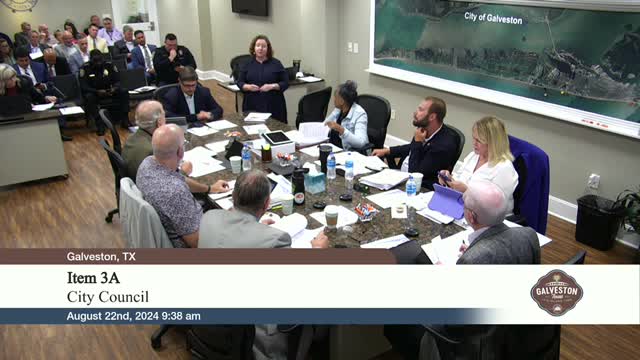City implements smart water meters to cut costs and leaks
August 22, 2024 | Galveston , Galveston County, Texas
This article was created by AI summarizing key points discussed. AI makes mistakes, so for full details and context, please refer to the video of the full meeting. Please report any errors so we can fix them. Report an error »

In a recent government meeting, officials discussed significant developments regarding a major rehabilitation project and the implementation of advanced water metering technology. The project, which is expected to incur substantial rehabilitation costs, is eligible for both federal and state historic tax credits, aimed at encouraging the preservation of historic resources.
The meeting also highlighted the city's initiative to leverage data from its smart solutions program to enhance system performance and manage future capital needs. Officials emphasized that the new Advanced Metering Infrastructure (AMI) system significantly improves the accuracy of water usage readings, achieving over 99% accuracy compared to older manual meters. This advancement is expected to help stabilize future utility rates by providing more precise data, which in turn will assist in quicker leak detection and reduce unnecessary rate increases.
Concerns were raised about the current operating reserves for the city's utilities, with officials noting that the reserves are lower than desired due to heavy expenditures in recent months. The discussion included the need for a dedicated operating reserve, particularly in light of the city's vulnerability to natural disasters.
The officials also addressed inflation concerns, suggesting that while the current analysis uses a 3% inflation rate, modeling higher rates could lead to increased utility rates. However, they expressed a preference to maintain lower rates for residents, at least until the new AMI system can demonstrate its effectiveness in revenue generation.
Additionally, comparisons were made with other cities regarding utility rates, with Galveston noted as having lower rates, attributed to not having raised rates since 2015. The officials clarified that the city's high level of service and the operational costs associated with numerous lift stations contribute to the overall rate structure.
As the AMI installations near completion, officials are optimistic about the potential for improved data accuracy and financial stability in the future, with plans to keep the public informed on progress through quarterly budget reports.
The meeting also highlighted the city's initiative to leverage data from its smart solutions program to enhance system performance and manage future capital needs. Officials emphasized that the new Advanced Metering Infrastructure (AMI) system significantly improves the accuracy of water usage readings, achieving over 99% accuracy compared to older manual meters. This advancement is expected to help stabilize future utility rates by providing more precise data, which in turn will assist in quicker leak detection and reduce unnecessary rate increases.
Concerns were raised about the current operating reserves for the city's utilities, with officials noting that the reserves are lower than desired due to heavy expenditures in recent months. The discussion included the need for a dedicated operating reserve, particularly in light of the city's vulnerability to natural disasters.
The officials also addressed inflation concerns, suggesting that while the current analysis uses a 3% inflation rate, modeling higher rates could lead to increased utility rates. However, they expressed a preference to maintain lower rates for residents, at least until the new AMI system can demonstrate its effectiveness in revenue generation.
Additionally, comparisons were made with other cities regarding utility rates, with Galveston noted as having lower rates, attributed to not having raised rates since 2015. The officials clarified that the city's high level of service and the operational costs associated with numerous lift stations contribute to the overall rate structure.
As the AMI installations near completion, officials are optimistic about the potential for improved data accuracy and financial stability in the future, with plans to keep the public informed on progress through quarterly budget reports.
View full meeting
This article is based on a recent meeting—watch the full video and explore the complete transcript for deeper insights into the discussion.
View full meeting
